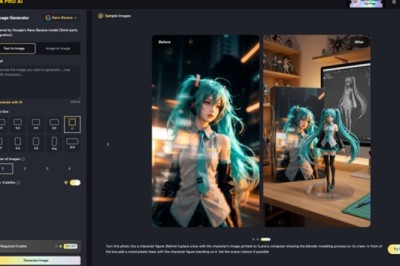views
The recent digitalization has brought some huge changes in the way we carry out transactions and handle assets. But, no matter how much the digital world takes over, there is still a gap between digital and reality.
Bytom (BTM) allows users to trade off-chain assets, such as securities and bonds on the Bytom platform, offering a promising solution that'll fill the gaps between the two worlds.
This new system will allow transactions to take place faster than ever, and keep transaction fees down to a minimum by cutting out third-party involvement. Plus, since it won't rely on trust, our assets will be more secure than they've ever been before.
In the following, you'll find everything you need to know about Bytom.
Bytom Overview
Bitcoin is a cryptocurrency that uses one blockchain, while Ethereum incorporates smart contracts and dApps into its two-layer system. BTM, a Chinese blockchain company, takes this even further by employing three layers including one for data transactions, another for transmissions, and the third, called the asset interaction layer, for interacting with assets.
This digital asset has the potential to shake up the cryptocurrency market with its low transaction fees, cutting-edge Bytom blockchain technology, and interactive protocol of multiple-byte assets. You can also store other cryptocurrencies in your Bytom wallet.
How Does Bytom Function?
The Bytom blockchain employs the Proof-of-Work consensus model similar to Bitcoin and Ethereum. It is crucial that Bytom is not vulnerable to hacks, such as the Sybil attack, because it exists primarily to manage high-value assets. When compared with other asset management platforms, decentralization and security usually take precedence over performance.
However, that wasn't good enough for Bytom. They wanted to solve the blockchain scalability trilemma once and for all. So, they created Bystack—a platform that stacks a Proof-of-Stake sidechain on top of an existing PoW main chain in order to take advantage of both models. This multi-chain approach protects users' assets with unrivaled security while also ensuring that the system is scalable when more users and assets start flowing in.
Should You Start Mining Bytom?
The Bytom protocol has great potential for interactive applications and could have a huge impact on the world if AI is introduced to the blockchain. The newly created Tensority algorithm can benefit from Bytom's mining equipment and reduce resource costs, making it more accessible for everyone. Bytom's consensus is reached through a PoW protocol mechanism that is compatible with ASICs. That will not only ensure the network's security but also enable miners to earn additional profit from verifying transactions across the network.
Staking Bytom
Staking crypto is a way of earning rewards by holding your cryptocurrency in a wallet. The process involves depositing your coins into a specific type of wallet, often referred to as a “staking wallet”, where they will be held until the staking period ends and you can claim rewards. By staking your coins, you become part of a network that helps to validate transactions and secure the blockchain in return for rewards.
Currently, users can stake a minimum of 1 BTM and receive a 7.75% yearly reward payout in return. Users can choose to delegate their staked tokens to validators who will then use the voting rights associated with those tokens to verify transactions on the Bytom blockchain.
Although it's easy to stake BTM, you may struggle to find reliable information on how to do so. Additionally, the wallet UI may not be user-friendly for those new to web wallets. Make sure you do your research and you'll quickly get the hang of it.
Is Staking Bytom Risky?
When you stake BTM, there is no risk because you always keep your private keys. You only lease them to block producers. In the event that your chosen block producer doesn't have constant uptime, you would miss out on a small percentage of rewards.
BTM Worth
Bytom's total supply is 1,407,000,000 BTM. While the price did increase along with the rest of the market in January 2018, its all-time high came much later on April 22nd, 2018 at $1.13. Nowadays, the BTM price varies and is around $1.
Bottom Line
We’ve covered the basics of Bytom, which is only a portion of what the platform offers. It definitely represents an intriguing project with a lot of potential. If you’re interested in digital assets and want to keep an eye on this space, then Bytom is definitely worth keeping tabs on.























Comments
0 comment